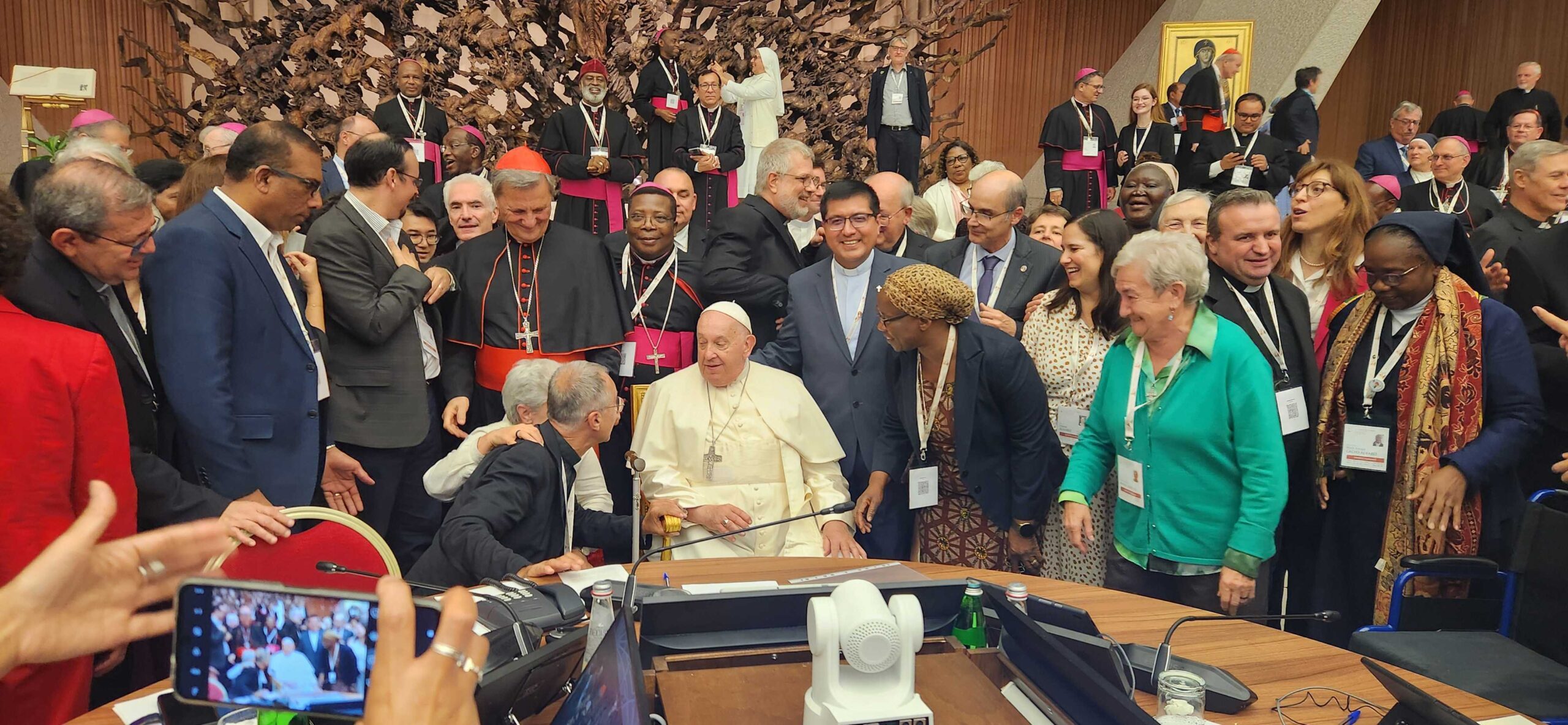Don’t worry, this will not be an essay trying to canonize Pope Francis. (Though I wouldn’t be surprised if that move came in a few years.) He wasn’t perfect. Why do I say that? Because he was a human being. By his own admission, when he was the Jesuit Provincial Superior in Argentina, he could be rash and, as he said in an interview with America, “authoritarian.”
But he was, as I saw it, a great pope, a good Jesuit, a faithful priest, a lovely person and, above all, a superb evangelizer. And by that last phrase I mean that he helped millions of people “come to believe,” a phrase we read in the story of the Risen Christ’s appearance to the Apostle Thomas.
Here’s a confession: Before I wrote my recent book on the Raising of Lazarus, I hadn’t given too much attention to the phrase “come to believe.” When a Jesuit friend began a fantastic ministry that helps to start two-year colleges for those who might not otherwise have the chance for a college education named “Come to Believe,” I started paying more attention to the phrase. But it’s a key element of John’s Gospel. And it is the stated reason in the Fourth Gospel that Jesus performs his “miracles,” which are called “works of power” (dynamis) in Matthew, Mark and Luke, but in John “signs” (semeia). These “signs” (healing the sick, giving sight to the blind, raising the dead) are not meant to astonish or amaze, but rather to help people “come to believe.”
This lies at the heart of the story of the Apostle Thomas, who is somewhat unfairly called “Doubting Thomas.” (Who wouldn’t doubt?) He is finally able to “come to believe” after the Risen Christ encourages him to place his fingers on the nail prints in his hands and Thomas’s own hand into Jesus’s wounded side. (By the way, note that it seems that Thomas doesn’t need to do that. Just the invitation suffices.) Then Thomas believes. And John’s Gospel says that many other signs were not recorded (wouldn’t it be great if they were?) but that this appearance to Thomas is recorded to help readers “come to believe.”
How did Pope Francis help people come to believe? Obviously, he couldn’t produce the Risen Christ precisely in the way that he appeared to the Apostle Thomas. Instead, Pope Francis helped us see Christ in other ways. In the Eucharist most of all. But also as he traveled among the forgotten poor in far-flung countries, visited inmates in a Roman jail, washed the feet of non-Catholics on Holy Thursday, embraced a man with a disfiguring skin condition in St. Peter’s Square, kissed the feet of South Sudanese political leaders in a bid to end civil war and met with transgender Catholics on a regular basis.
Francis helped us to see Christ not only among these people (that is, alive in these individuals, in the Body of Christ, which is the church) but also with his own gestures. Jesus taught in words and deeds, and so did Francis. (I’m not equating the two; but all Christians are supposed to emulate Our Lord.) In so many ways, what Francis said and did made even hard-bitten cynics say, “This is just what Jesus would say.” Or “This is what Jesus did.” Or, more importantly, “This is what Jesus asks us to do right now.”
It’s no secret I was a great fan, admirer and supporter of Francis. I will miss having him as pope, spiritual leader of over one billion Catholics and a friend to me. And his legacy is more complicated than can be summarized in this brief article. But weren’t we lucky to have someone who was able to help so many people “come to believe”?
Our task, which he will help us with as our intercessor, is to find ways to do the same, maybe not in the same ways that Francis did—very few of us are going to have millions of people welcome us when we visit another country!—but in our own ways, in our own times and in our own lives, so that when people see what we say and do, they will “come to believe.”




